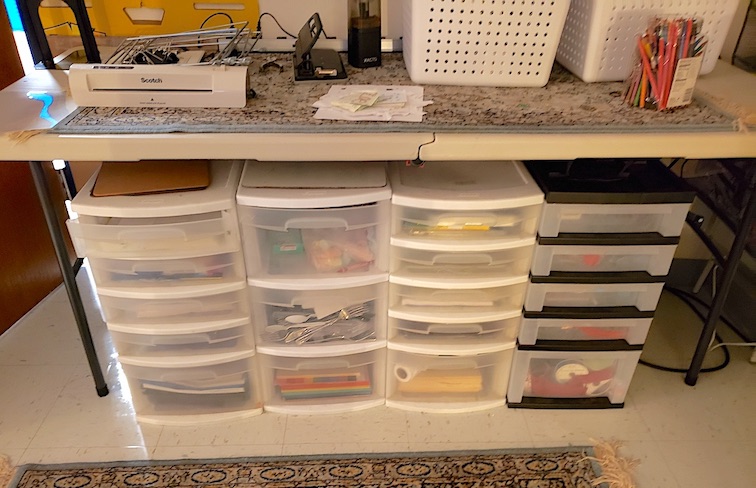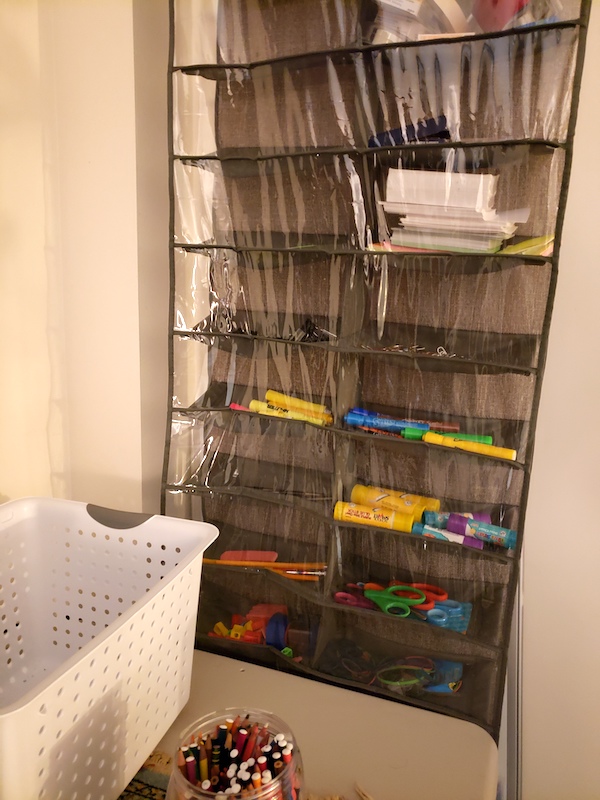Supplies: The Fallacy of Kids Being ‘Prepared’
A MiddleWeb Blog
Teacher Dina Strasser is back for another school year, bringing her unique blend of humor, irony and serious concern.

Over the years, I have learned that those relationships are often affected by fundamental circumstances well beyond student control. Children do not control their home lives. Children do not control their finances. And middle school children, in particular, have trouble finding even their own bodies in space, let alone their writing implements.
It slowly began to dawn on me that expecting a child to show up with certain possessions was like expecting them to have ample time and space to complete their homework: expectations rooted in deeply problematic assumptions of middle class values and capital.
Currently, the school supply situation is exacerbated by lack of school funding, inflation, increasing expectations for technological devices, and the devastating financial impact of the pandemic.
It’s significant enough that an actual index is published – the Huntington Backpack Index – to measure the rising costs of school supplies. This year, our middle school families can expect to fork over somewhere around $1300 per child in school supply costs.
How do I approach this problem?
I don’t expect kids to have school supplies. Period. I don’t ask for them. I don’t require them. And I don’t punish kids via their grades for not having them.
Instead, I have a supplies corner where kids are taught to take what they need, when they need it.
The supply corner, frankly, is one of my favorite classroom investments. It represents years of refining, stockpiling, and trial and error. I have nearly every kind of pin, marker, pen, paper, tape, and basic art supply you can name, placed neatly in multiple drawers and shoe hangers.
I have figured out where to get what items cheaply or for free, and how often. And when the zombie apocalypse comes, boy, we will not be caught without paper clips.
My take on responsibility
Does my supply corner teach children irresponsibility? Does this “let them off the hook”? Nope. In fact, I’ve realized that this approach teaches them far more responsibility than docking points or calling home, because if students in my classroom don’t have something they need, it becomes their immediate responsibility to solve their problem on their own.
We learn the explicit procedure of quietly getting up, finding what is required in the supply corner, and sitting right down and getting back to work.
I can’t really overemphasize the cascading benefits of this policy. We do not waste precious instructional time chasing down a school supply in a black-hole backpack. My students do not distract one another with requests for loans or snippiness about stealing. We engage in zero irritating conflicts and power plays about “Why don’t you have X?”.
Grades, which should only reflect academic mastery, are not inflated or deflated artificially by whether a kid didn’t have enough looseleaf paper. And perhaps most importantly, I have no concerns or regrets about putting financial pressure on already frazzled families.
This year, consider solving the school supply issue by removing it entirely from your classroom calculus. It’s going against the grain of typical management approaches to “being prepared,” but trust me: it works.




































Bravo! It takes a wise and well-organized teacher to put these supplies available openly. Once kids have the materials needed, they can also learn to be good stewards. They can see the supplies and that they are limited. They can be quicker to get started and to share materials. There is no poor-mouthing about costs, just encouragement and the pleasure of putting things into motion. It removes cultural divisions based on family finances. What a joyful advocacy from a joyful teacher!
In the grand scheme of things, the investment in paper and misc. supplies is minimal compared to the benefits that will arise as students feel valued enough to have someone invest in a few supplies for them. great idea!
Once again, Dina, your common sense approach is uplifting and helpful! Thanks for pointing out how to lessen a battle for teachers as well as make sure every student has a reasonable chance to succeed!